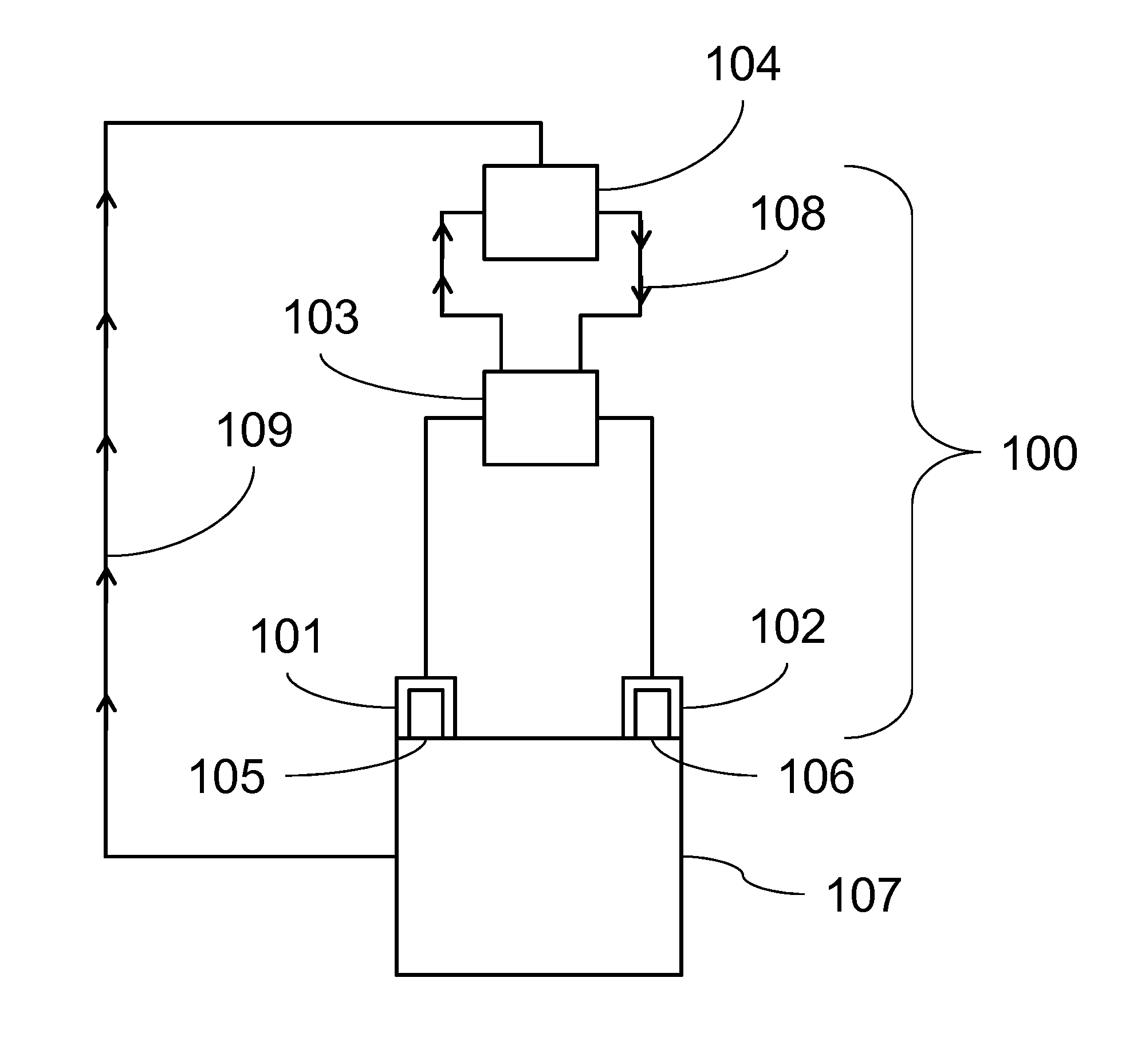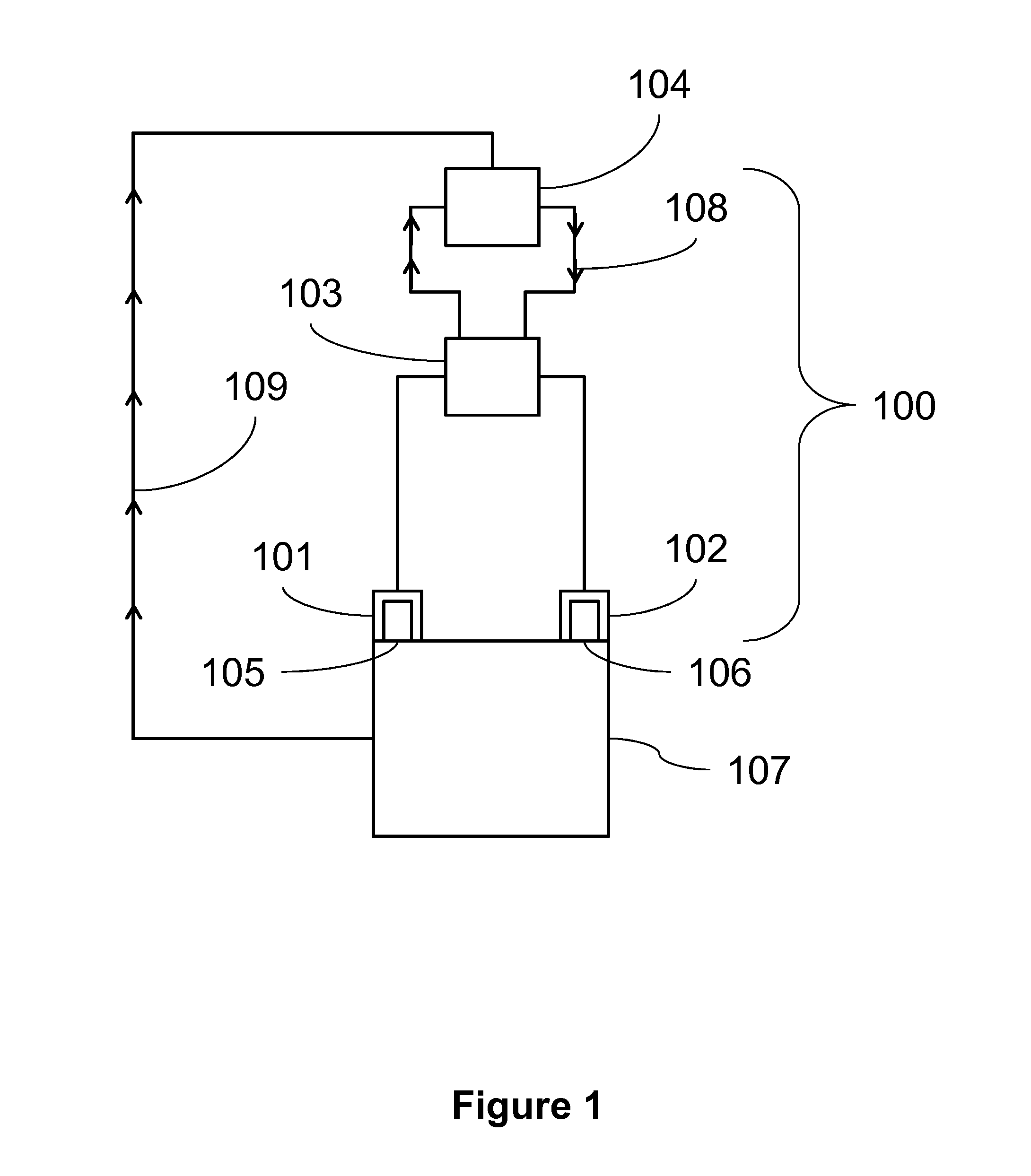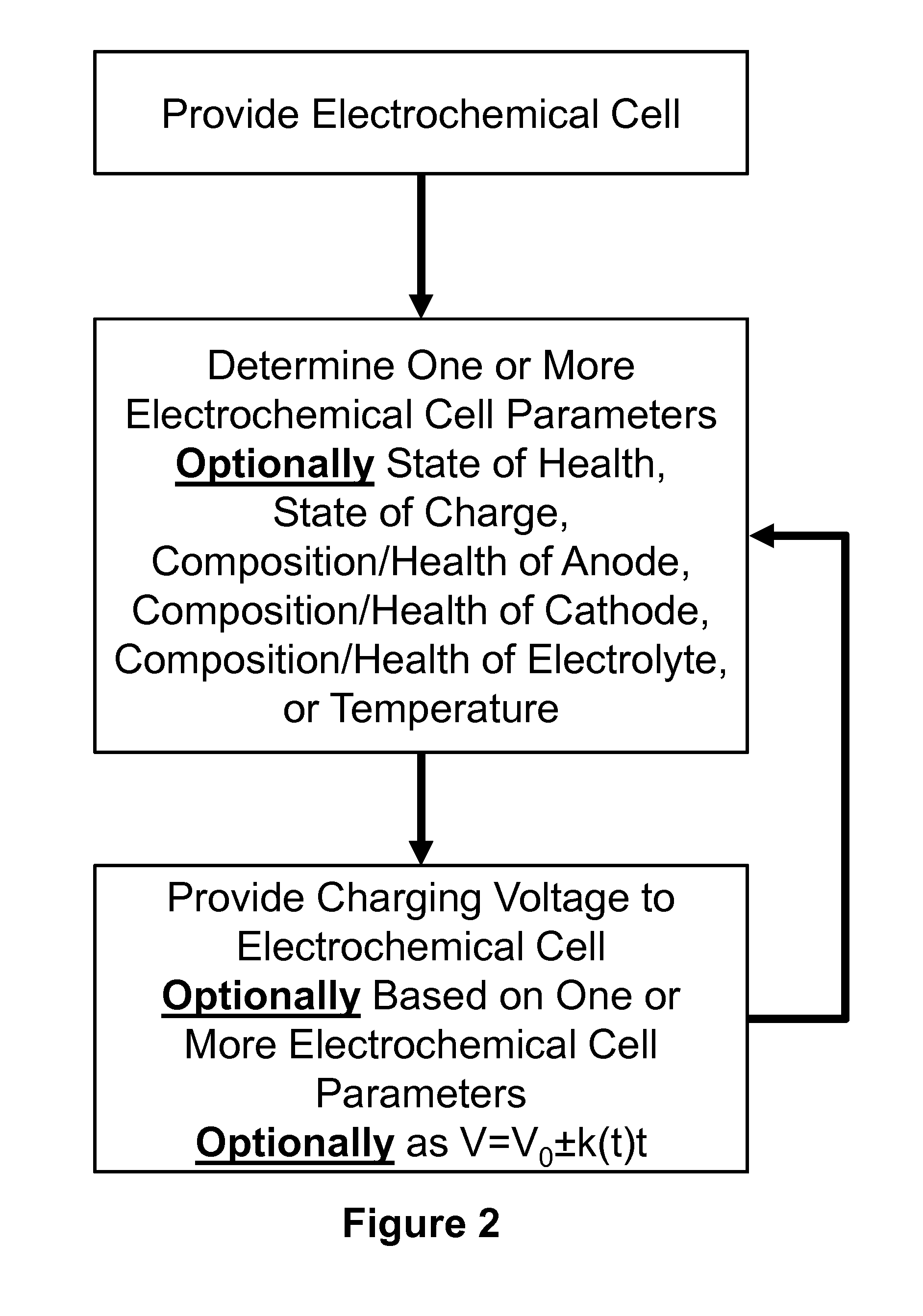Smart Battery Charging System
a charging system and battery technology, applied in the field of smart battery charging system, can solve the problems of battery components, lithium ion batteries, and failure to take into account certain system parameters that can significantly affect cycling performance and battery lifetime, and achieve the effect of increasing the cycling performance and/or the useful lifetime of the electrochemical cell, and improving device performan
- Summary
- Abstract
- Description
- Claims
- Application Information
AI Technical Summary
Benefits of technology
Problems solved by technology
Method used
Image
Examples
example 1
Battery Charging System
[0042]Lithium ion batteries are commonly charged using the constant-current, constant-voltage (CCCV) method. In this method, for example, the battery charger controls applied constant current and final voltage, optionally together with some battery safety parameters such as temperature and overcharge currents and voltages. In addition, some chargers or methods may take into account the battery cycle life to adjust the CCCV conditions. Occasionally linear voltammetry (LV) is applied to charge and discharge batteries. In such technique, applied voltage V varies linearly with time:
V=V0±kt, and Vmin≦V≦Vmax;
wherein V0=starting voltage, t is time, k=constant and Vmin=minimum voltage, Vmax=maximum voltage.
[0043]The conventional CCCV procedure, however, does not take into account the battery state of health (SOH) resulting in premature battery aging and irreversible losses in stored energy upon cycling. Using cycle life as metrics to change the CCCV parameters helps g...
PUM
 Login to View More
Login to View More Abstract
Description
Claims
Application Information
 Login to View More
Login to View More - R&D
- Intellectual Property
- Life Sciences
- Materials
- Tech Scout
- Unparalleled Data Quality
- Higher Quality Content
- 60% Fewer Hallucinations
Browse by: Latest US Patents, China's latest patents, Technical Efficacy Thesaurus, Application Domain, Technology Topic, Popular Technical Reports.
© 2025 PatSnap. All rights reserved.Legal|Privacy policy|Modern Slavery Act Transparency Statement|Sitemap|About US| Contact US: help@patsnap.com



